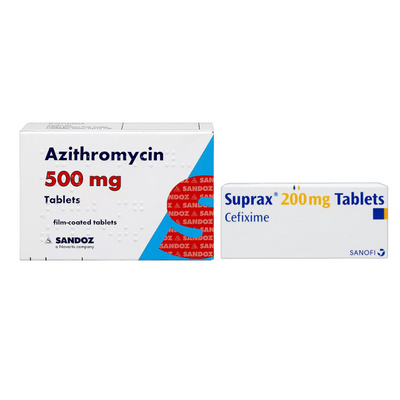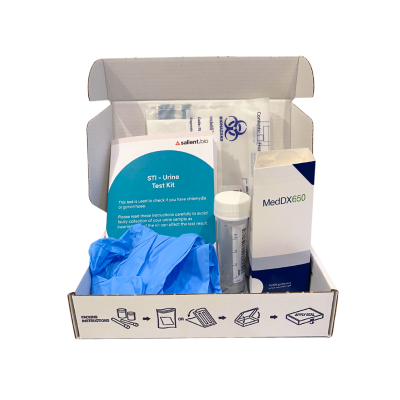Gonorrhea Tablets
Category:GonorrheaGonorrhea is a bacterial infection that is typically treated with antibiotics. The specific antibiotic used to treat gonorrhea depends on the severity of the infection, the patient's medical history, and the presence of any allergies to antibiotics.
This treatment treats both gonorrhea and chlamydia.
Fetching Data...
Frequently Asked Questions for Gonorrhea Tablets
Further Information
- What is cefixime and azithromycin, and how are they used for gonorrhea treatment?
- How are cefixime and azithromycin taken?
- Are there any potential side effects of cefixime and azithromycin?
- When should I follow up with a "test of cure" after treatment with cefixime and azithromycin?
- Can I purchase cefixime and azithromycin over-the-counter?
- Can cefixime and azithromycin be taken together for gonorrhea treatment?
- Are there any precautions or contraindications for cefixime and azithromycin use?
- Can I drink alcohol while taking cefixime and azithromycin?
What is cefixime and azithromycin, and how are they used for gonorrhea treatment?
Cefixime and azithromycin are antibiotics commonly used in the treatment of gonorrhea, a sexually transmitted infection. Cefixime belongs to the class of antibiotics known as cephalosporins, while azithromycin is a macrolide antibiotic. These medications work by killing the bacteria responsible for gonorrhea and stopping their growth.
How are cefixime and azithromycin taken?
Gonorrhoea treatment typically involves taking 4 x Suprax 200mg tablets and 4 x Azithromycin 500mg tablets in a single dose. Suprax (Cefixime) is generally taken orally in the form of tablets, and it is important to follow the prescribed dosage and complete the full course of treatment. Azithromycin is also taken orally, either as tablets or a liquid suspension. As with any antibiotic treatment, it is crucial to adhere to the prescribed dosage and complete the entire treatment regimen to ensure effectiveness.
Are there any potential side effects of cefixime and azithromycin?
Like any medication, cefixime and azithromycin can have side effects. Common side effects of cefixime may include diarrhea, nausea, stomach pain, and headache. Azithromycin can cause side effects such as diarrhea, nausea, abdominal pain, and in some cases, allergic reactions. It is important to consult a healthcare professional if you experience any concerning side effects.
When should I follow up with a "test of cure" after treatment with cefixime and azithromycin?
t is recommended to get a "test of cure" 7-14 days after completing the treatment with cefixime and azithromycin. This test helps ensure that the infection has been successfully treated. Remember to consult with your healthcare provider for guidance on follow-up testing.
Can I purchase cefixime and azithromycin over-the-counter?
No, cefixime and azithromycin are prescription medications and cannot be purchased over-the-counter. It is important to consult a healthcare professional who can diagnose your condition and prescribe the appropriate treatment based on your specific needs.
Can cefixime and azithromycin be taken together for gonorrhea treatment?
Yes, cefixime and azithromycin are often prescribed together as a dual therapy for the treatment of gonorrhea. This combination helps ensure effective treatment and reduce the risk of antibiotic resistance. It is important to follow the prescribed dosage and complete the full course of treatment for both medications.
Are there any precautions or contraindications for cefixime and azithromycin use?
Yes, it is important to inform your healthcare provider about any allergies or sensitivities to antibiotics or any other medications. Additionally, inform them of any medical conditions or medications you are currently taking to ensure that cefixime and azithromycin are safe for you to use. Your healthcare provider will assess your specific situation and determine the appropriate treatment options.
Can I drink alcohol while taking cefixime and azithromycin?
It is generally recommended to avoid consuming alcohol while taking antibiotics like cefixime and azithromycin. Alcohol can interfere with the effectiveness of the medication and may increase the risk of side effects.

